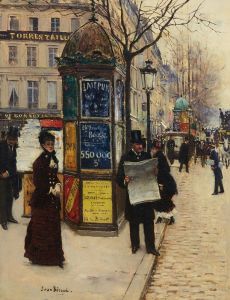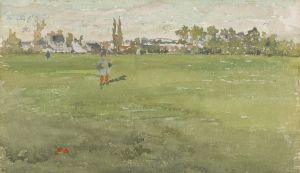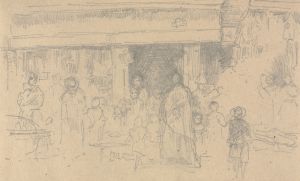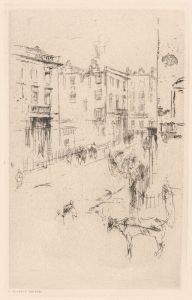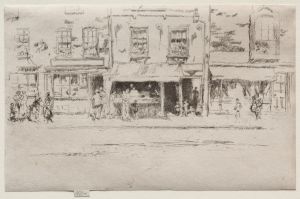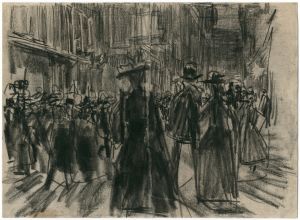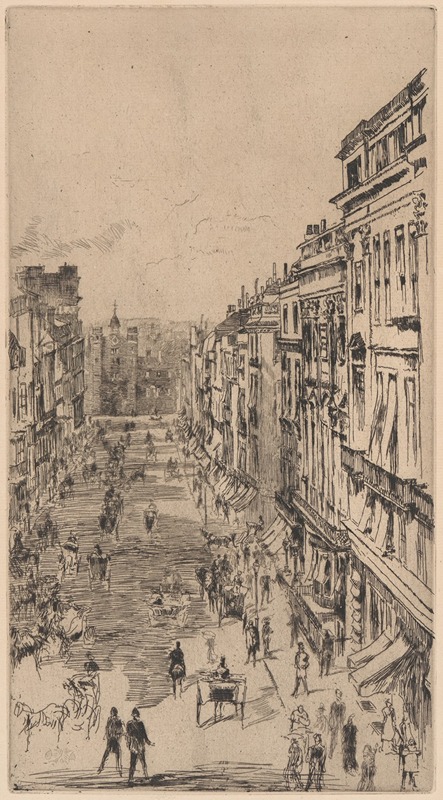
St. James Street, London
A hand-painted replica of James Abbott McNeill Whistler’s masterpiece St. James Street, London, meticulously crafted by professional artists to capture the true essence of the original. Each piece is created with museum-quality canvas and rare mineral pigments, carefully painted by experienced artists with delicate brushstrokes and rich, layered colors to perfectly recreate the texture of the original artwork. Unlike machine-printed reproductions, this hand-painted version brings the painting to life, infused with the artist’s emotions and skill in every stroke. Whether for personal collection or home decoration, it instantly elevates the artistic atmosphere of any space.
"St. James Street, London" is a painting by the American-born artist James Abbott McNeill Whistler, who is renowned for his contributions to the art world during the late 19th century. Whistler, born on July 10, 1834, in Lowell, Massachusetts, is best known for his innovative approach to art, which often emphasized mood and atmosphere over detailed representation. He spent much of his career in Europe, particularly in London, where he became a central figure in the Aesthetic Movement.
The painting "St. James Street, London" is part of Whistler's exploration of urban scenes, capturing the essence of city life through his unique artistic lens. Whistler's work often focused on the interplay of light and color, and he was known for his ability to convey the atmosphere of a scene with subtlety and nuance. This particular painting is no exception, as it reflects his interest in the bustling streets of London, a city that served as both his home and a significant source of inspiration.
Whistler's technique in "St. James Street, London" likely involves his characteristic use of a limited color palette and fluid brushwork, which he employed to create a sense of harmony and balance in his compositions. His approach was influenced by his exposure to Japanese art, which emphasized simplicity and the beauty of everyday scenes. This influence is evident in the way Whistler captures the essence of St. James Street, focusing on the mood and atmosphere rather than intricate details.
Throughout his career, Whistler was known for his innovative approach to art, often challenging traditional conventions and advocating for the idea that art should stand on its own merits, independent of narrative or moral instruction. This philosophy is encapsulated in his famous quote, "Art should be independent of all claptrap—should stand alone and appeal to the artistic sense of eye or ear, without confounding this with emotions entirely foreign to it, as devotion, pity, love, patriotism, and the like."
"St. James Street, London" fits within Whistler's broader body of work, which includes portraits, landscapes, and cityscapes. His most famous painting, "Arrangement in Grey and Black No. 1," commonly known as "Whistler's Mother," exemplifies his focus on composition and tonal harmony. While "St. James Street, London" may not be as widely recognized as some of his other works, it nonetheless reflects his mastery of capturing the urban environment with an eye for mood and atmosphere.
Whistler's influence on the art world extends beyond his paintings; he was also a prominent figure in the development of the Aesthetic Movement, which emphasized the importance of beauty and aesthetic experience over moral or social themes. His work and ideas have had a lasting impact on both his contemporaries and subsequent generations of artists.
In summary, "St. James Street, London" by James Abbott McNeill Whistler is a testament to the artist's skill in capturing the essence of urban life through his distinctive style. The painting reflects Whistler's commitment to the principles of the Aesthetic Movement and his ability to convey mood and atmosphere with subtlety and elegance.





